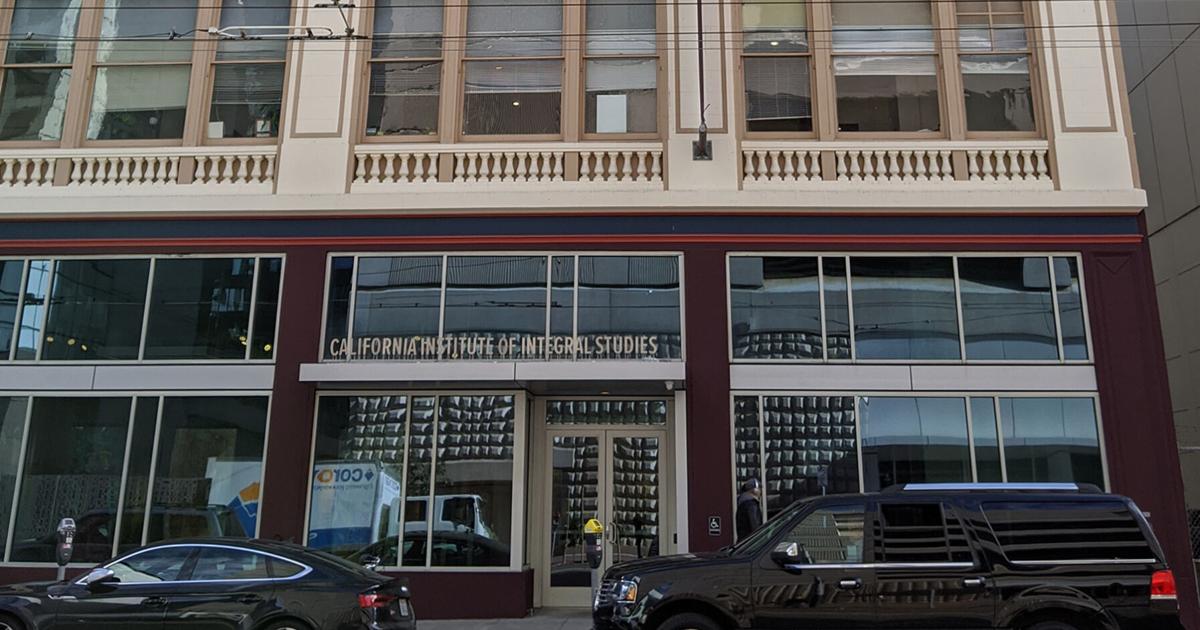
I walk home with a friend but without an umbrella after an opening reception at the California Institute of Integral Studies. It’s raining — drizzling, really — and for the last three hours we’ve been craning necks, tilting heads and contemplating insights at the institute’s event, “Relational Beings: Four Solo Exhibitions in Conversation,” instead of checking the weather app. Though none of that matters when I turn to her and say, “I’m still not really sure what the connection between them is …” and I realize that maybe this is the entire point.
“Relational Beings” commences with a note from curator Kija Lucas. Beginning initially as a brief foreword on the artists and their creative intent, she cracks a few quips on her curatorial style, jokingly revealing that others rarely understand the connections she makes between art. But “Relational Beings” is an exception — its connection screams at us. She delineates it as “a continuity of artists,” in a statement so point-blank I’m convinced I’ve known that before I even walked through the door.
The thing is, I didn’t really find “Relational Beings” to be as exclusively relational as Lucas declared. It seems a bit like a cop-out to underscore relativity in the artists as paramount, but there’s also a suffocating quality in assigning a singular meaning to a production with four distinct collections.
An uncomfortable pill to swallow — why should one accept no particular reading as the reading? But in the walk up the concrete staircases of the exhibit, the ambiguity began to seem almost alright.
On the ground floor, “Parallax Errors” by Tamara Suarez Porras exists as a feat of irony. Photography is assumed as a guarded haven for realism. Yet, as Porras’s black-and-white collection sits in their concave frames, unfocused and hazy subjects force viewers to question the disparity between perceptions and reality. The camera itself, regarded so reliably as a truth teller within the tradition of photorealism, isn’t exempt from lying; in fact, the collection’s namesake is a fallacy of the camera. “Parallax error” is the term assigned when what photographers see through viewfinders isn’t replicated by lenses. Surpassing a presumption that the camera is a transmitter of truth, it’s actually more natural for the camera to present an altered reality. In this way, Porras identifies photography on par with the abstract art world by recreating it in an ambiguous space.
On the second floor, Shao-Feng Hsu’s concurrent series, “Night Swimming” and “Coastal Access” become reflective mirrors of each other. Using a camera-less photography technique, “Night Swimming” is a reflection on the process of underwater breathing, told through a series of 20 prints. Hsu visually explores the broken-down process of breathing through means that are more external than naturally so. However, in a later panel discussion, Hsu stated an intention to place viewers in his place, so interacting with the breath prints in this way seems right.
On the third floor, Sholeh Asgary’s “Ghatel” — a Farsi word for murderer — breaks up both a photographic consistency in the exhibit and a personal comfortability. Previously a sound performance artist, the hanging white cloths are a far cry from mixing booths. Indented mounds on a series of white cotton rags create topographical maps of qanats — Iranian underground waterways. Influenced by the lack of oxygen in the tunnels, Asgary’s experiments with Hsu-esque breath work to craft her pieces, literally breathing into the plaster molds to create cavities akin to braille, Martian craters and acne. This practice of breath harkens from her sound art days — what is sound if not a sequence of breaths?
A few days after the show, I’m in lecture listening to my professor joke about the academic’s frustration with the English major’s relentless acceptance of ambiguity. Everyone is constantly reaching for explicit answers, he explains, but what happens when we don’t choose a specific interpretive path?
“Relational Beings” is an ambiguous show. This is not to say there aren’t connections between the four — it’s more to say that not everything needs to be so overt all the time. Assigning a sole purpose might be sacrilegious to art. Obscurity seems like a secret I’ve been let in on. So my question to exhibitions everywhere: Is it more rewarding to be assigned meaning or to lie in ambiguity?
